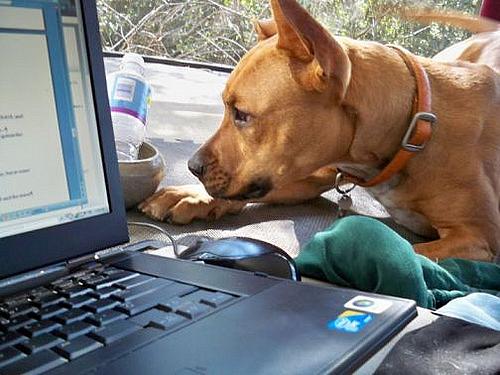Writing Long with Katherine Eban

In 2008, Katherine Eban became a contributing editor at Condé Nast's Portfolio magazine. With about 12 years of experience as a journalist -- a few years on staff at The New York Times, a bit of time as a consultant to ABC News, the 2005 book Dangerous Doses, and a number of successful years as a freelancer -- this gig, she says, was "journalistic nirvana."
Being a contributing editor for a magazine means she was on salary for a certain number of words or stories per year. She got a monthly check so that she could put all her energy into Portfolio, and not worry about the otherwise sporadic nature of freelance payment.
 "It's the perfect arrangement if you want to do long-form stories," she explains in phone call from New York. "It's hard to do those kinds of stories without the support of a publication behind you."
"It's the perfect arrangement if you want to do long-form stories," she explains in phone call from New York. "It's hard to do those kinds of stories without the support of a publication behind you."
In the spring of 2009, however, the business glossy shut down.
"I had literally just input all of the changes to a big story we were about to do and pressed the send button," says Eban. "A press releases popped into by inbox that Condé Nast was shutting down Portfolio. I had a big story that was now homeless."
Eban immediately sent a cold note to another business magazine, Fortune. She had never written for them before, but it was a big story and she wanted to see it placed. A few months later, Fortune ran the piece, a high-profile report about a medical mafia in Las Vegas and the lawyers and doctors who conspired to drain the benefits of accident victims.
She continued to write for Fortune and other magazines. At the end of last year, Fortune brought Eban into their fold more formally as a contributing editor. She will write four big health-related stories a year (though she is not committed strictly to health). More than 15 years into her journalism career, Eban has developed good ways to work on long stories -- keeping sane financially and giving structure to long projects.
Don't worry about regular bylines. For Eban, work has come in waves. Some types of work (getting published, giving interviews) is more visible than others ("You have to disappear to do a book," she says. "There's no way around it."). But Eban's big stories drove editors to her which helps keep her working.
"The fact that I don't worry about [regular bylines] has enabled me to go off and do this long-form stuff," she says.
Multitask. Eban works on three stories at once, but makes sure they are in different stages of production. She'll develop one story while writing another and closing -- working on revisions and publication -- of a third. This system keeps the work and money flowing.
"If you don't have all those balls in the air, it's going to be a super tough road for a freelancer," she says. "It's not ever easy. But if you were looking for a cake walk, you probably wouldn't be a freelance journalist."
Think about structure first. When you're at the point in an investigation where you have a lot of material, spend a lot of time working through it.
"People tend to think, 'I've got to start writing,'" says Eban. "It's worth every minute to organize first."
In her most recent Fortune story, which she completed last week but has not yet published, she investigated two groups with different accounts of the same subject. The story took four and half months and five trips to report. She submitted 8,000 words.
"When you have an incredibly large amount of material, a dense story -- let's say you've gone out and done your reporting and gathered all these documents -- you have to know what you have," she says. "I will spend literally months marinating in all this material."
(One caveat: "If you're under a serious time constraint, you have to take what I'm saying and throw it out the window.")
Here's the breakdown for this most recent story:
1. Three or four weeks into her reporting, she started creating a timeline with help from a junior reporter at Fortune. It took five to ten days to lay everything out into an big Excel spreadsheet. She logged dates, characters, documents, quotes, incidents and events. Through this process, she was continuously reporting and adding to the timeline for about four more weeks.
2. Once the timeline was done, she dug in to a detailed outline. That took about three days to complete. "On these stories, content is structure. It's not a small question," she says.
3. "Then you've got to go to your office and close your door. You've got to write," she says. She wrote three completely different opening sections to the story. It took about one month for her to complete a draft. "Writing is agony. It's just brutal," Eban says. "You have to go that dark place."
What helps her, which many freelancers will relate to, is an "over-developed sense of dread." "I'm always afraid that every story I write is my last story, that my journalism career is over, that no one will want to print my work," Eban says. It sounds dreary, but she appreciates that "hungriness," which keeps her from becoming complacent or tired.
4. The last step is revisions, which is dependent on editors and the legal issues surrounding the story.
Choose your distractions wisely. "There's so much distraction and it's so difficult to get into the concentrated area," says Eban.
Because she works with so many confidential sources and there are so many legal issues in the stories she pursues, she can't tweet tidbits as she goes. But social media, she recognizes, is how people communicate and can giver her a certain visibility between big projects.
"I do it. Not enough, but I do," she says.
But Eban has never gotten a good source or story because of her presence in social media. Most of her stories come from people who "sat around for a long time thinking about whether they're going to contact me or not."
Ask for a kill fee up front. If you are a freelancer you've likely had this experience: You file a story and the editor sits on it for months. This would be fine except that you aren't paid until the article is actually published.
Once you have a good relationship with an editor and magazine -- and they recognize the value of your work -- think about putting a provision in your contract for a long investigation that divides the payment in increments, says Eban. You can ask for the magazine's kill fee up front or ask that payment be divided up front, when you submit your first draft and after publication.
Eban recognizes that this kind of negotiation is something to aim for in a freelance career, but it takes a while to get there.
"Get a dog. It helps." They're her last words of advice, but part of her process that she values immensely.
Photo at right: Dog vs. Computer by Lorri Momiji on Flickr Creative Commons

